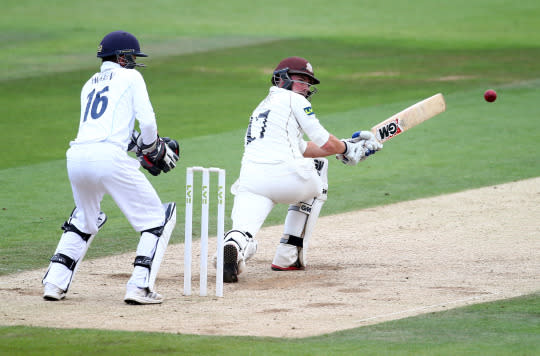Talking Cricket: Restructuring of domestic game remains unclear

Restructuring plans for the domestic game in England remain firmly up in the air despite the Chief Executives and Chairmen of the County Cricket clubs meeting across two days on Tuesday and Wednesday.
A recent Professional Cricketers’ Association survey revealed an overwhelming desire by its participants to reduce the workload on players - but implementing that is not a straightforward matter and the search for a solution goes on.
The much-maligned idea of an eight to ten team city-based Twenty20 competition has been removed from the table due to a strong resistance from the majority of the 18 counties. It now appears, however, that reducing the number of County Championship games could be just as difficult.
England’s limited-overs captain Eoin Morgan said in his press conference after the T20 win against Australia on Monday that a slimmed down domestic competition was the only way to produce to the best players in the shortest form of the game.
The counties were reassured, however, as far back as mid-July in an email from the England and Wales Cricket Board that that proposal had been dismissed. The idea is not dead though and may be revisited if it’s deemed that the current system has not developed sufficiently when, crucially, the current broadcast deal is up for renewal in 2019.
A new product of a city-based tournament with the world’s top players brought in could then be sold to the highest bidder, which is another reason it was removed so quickly from the table as such a lucrative deal is not possible under the current contract.
In the meantime, the Natwest T20 Blast is set to be moved to a later start date in the season but the block format, also requested in the players’ survey, is not a formality. Scheduling the majority of the games on a Friday night has proved popular and it seems likely that the players will have to make do for now with some mixture of T20 fixtures in amongst other first-class games - a major bug bear of all the squads.
The similarly maligned 50-over competition, the Royal One-Day Cup, also faces an uncertain future and it was desired that this too was played in the block.
My understanding is the ECB have not fully ruled out the idea that this may be the compromise to reduce the schedule with a smaller city-based competition utilising the pick of the top players from the counties. It would replicate the intensity of international cricket rather than the fatigue-riddled farce into which this year’s tournament descended.
With the ICC Champions Trophy and the World Cup both staged in this country in the coming years, it is felt by some in the corridors of power that this would be the best way to prepare England’s potential players in that format.
The reduction of the County Championship is without doubt the easiest way to ease the congestion of the current schedule but it is the least popular option amongst the counties, their members and a good number of the players, who still see it as the pinnacle of the domestic structure.
Concepts of three six team divisions or not playing every side twice in the current two divisions have been mooted but the closest the ECB have come to a plan they believe they can get the counties to sign up to is an eight team top division with ten in the second tier. In which case the integrity of the title winners would not be compromised with the teams playing everyone home and away, while in Division Two the counties would have to be drawn with not all playing each other twice.
This would reduce the number of games to 14 - trimming eight days off the season - and would be implemented with only one team promoted in 2016 and two relegated. It would also fall into line with the laid out plan for the 2017 restructure.
This biggest pitfall for this, though, is the already sizeable gulf between the two divisions that has seen so many of the top players migrate to the biggest counties and could push some of the smaller teams even further adrift at the bottom of the pile.
Some top-flight players have already told me they question the first-class status of Division Two and the new proposal would only damage its reputation further, while making long-term strategies at the smaller counties almost impossible if their top young talent is snatched ever more readily by an elite rival.
Two relegated from a pool of eight though should at least mean that even the biggest teams drop down occasionally as has been witnessed in the nine-team tier since the turn of the century with Yorkshire, Nottinghamshire and Lancashire each relegated the following season after winning the title.
For now it seems the players will have to make do with a similar scheduling of games next year but the ECB must at least ensure the travel requirements on the teams is reduced.
Smaller regional groups for the One-Day Cup is the obvious trade off for next season if the stalemate between the counties and ECB continues. The next note for the diary is the ECB board meeting in three weeks by which point the pressure will be on with the deadline for the finalisation of the 2016 fixture list approaching fast.

 Yahoo Sport
Yahoo Sport 





































